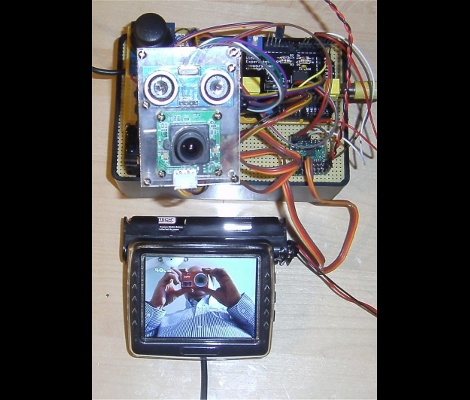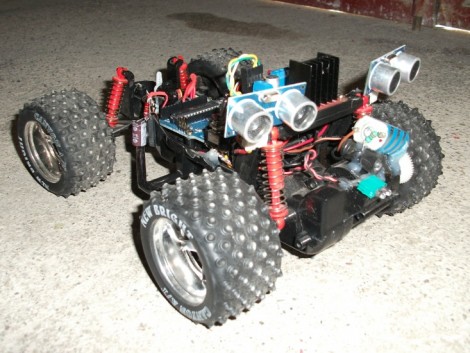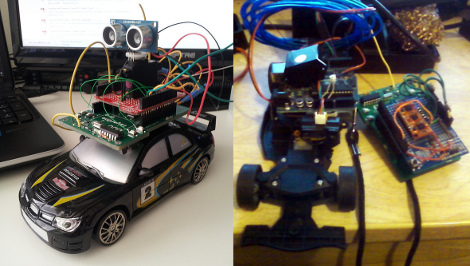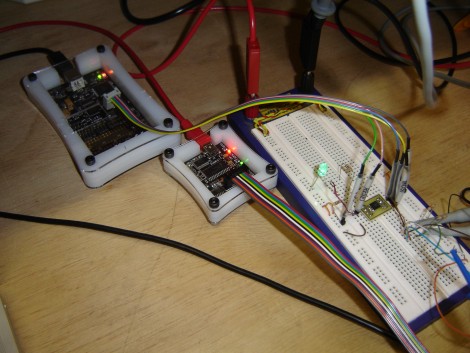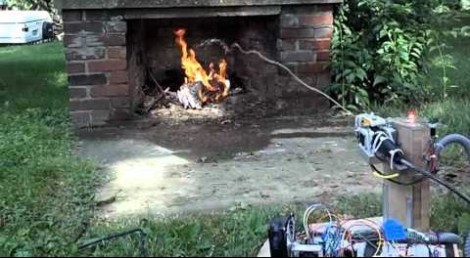
This robot can find and extinguish fires automatically. It is the culmination of an Embedded Design class project from last school year. [Dan] and his classmates developed a turret that holds both a spray nozzle and heat sensor which would be a fantastic building block for a real-life tower defense game.
The jewel of the sensor array is a TPA81 thermopile array. Note the use of the term ‘array’ in the name. This is more like eight temperature sensors aligned with each other. By monitoring them all, the direction from which the most heat is coming can be determined. Once it’s zeroed in on the fire getting water to the right place can be a difficult task. That’s where the other sensors come into play. An accelerometer allows the bot to determine the angle of the spray nozzle (a weed sprayer was used in this case). An ultrasonic range finder and few algorithms let the Arduino which drives it all make sure that the arc of the water lands on the hot spot. This is all shown quite clearly in the clip below the jump.
Continue reading “Heat-seeking Firebot Drowns Out The Flames”

